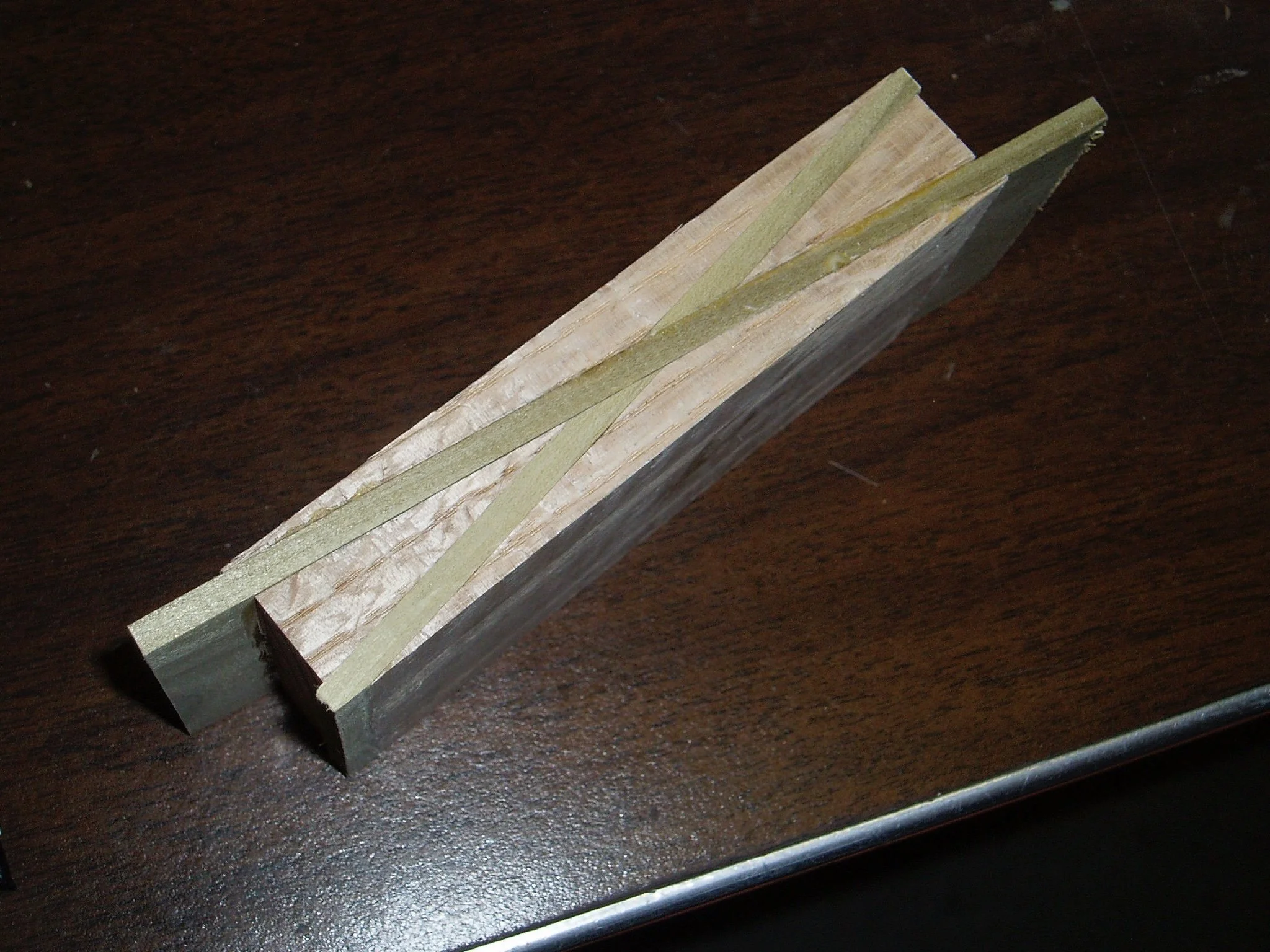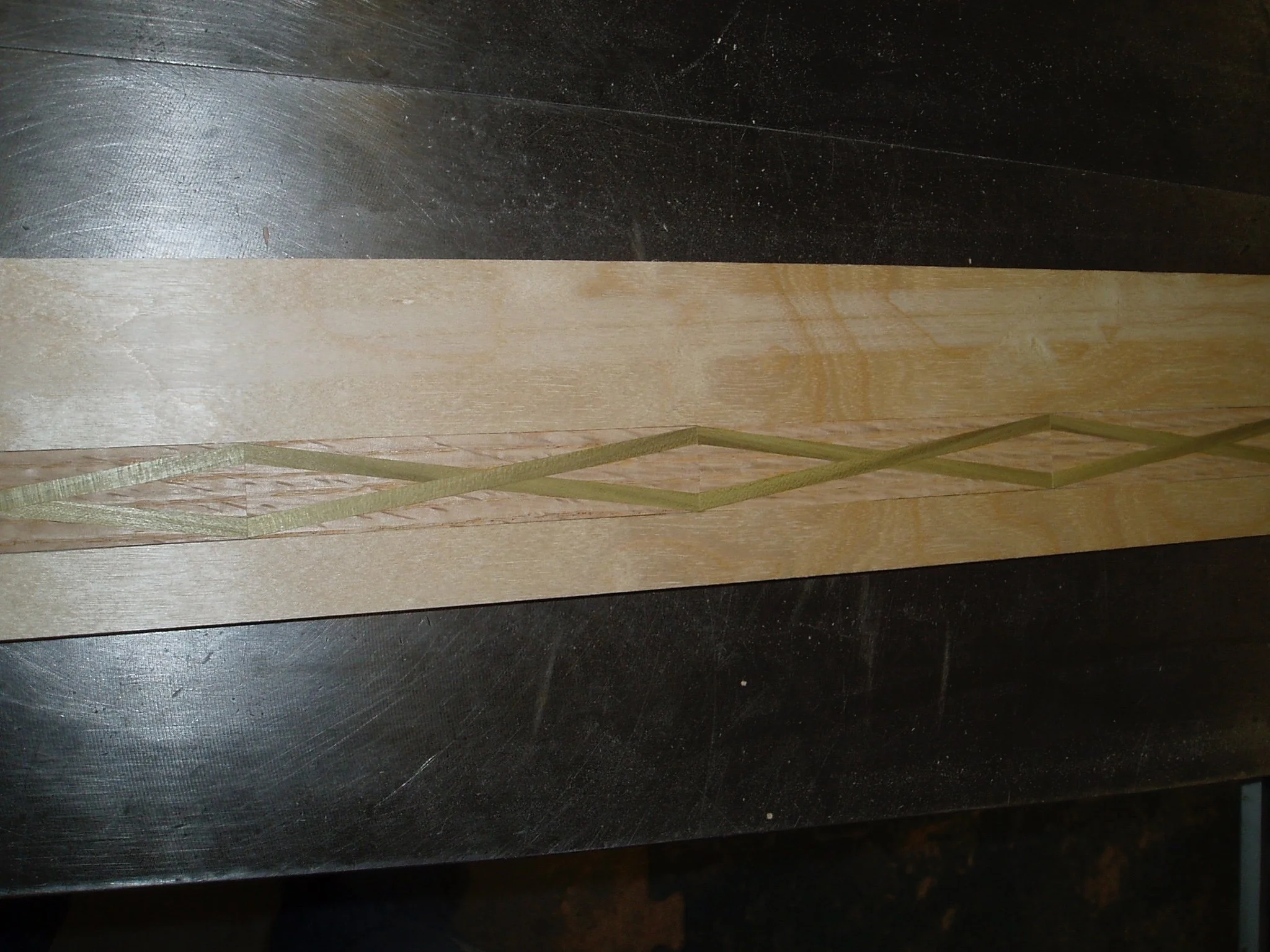Stuffed with Leftovers
People frequently collect scraps of things. They have different reasons: sentimentality, beauty, future use. For woodworkers, it’s often because the scrap is some beauteous remnant of an amazing species we were blessed to work with, or a particularly noteworthy grain pattern on an otherwise mundane plank of wood. I have wavy bits of pine, speckled cut-offs of maple, walnut crotch chunks, bits of ebony from an African missionary, old-growth straight-grained Douglas fir from a tossed bookcase. We fill a cubby and eventually an entire corner or shelf with scraps we tell ourselves we’ll get to.
Loooooong ago, near the beginning of the century, I had a 3/4” x 1 1/2” x 5” chunk of red oak with the most amazingly straight, quarter-sawn grain pattern. The open grain was nearly parallel with the cut of the block and the medullary rays were slanting across at a regular angle. I also had a couple of thin slices of poplar that were entirely green bits of the heartwood. None of it was much of anything to do with.
Photo of a striped block of red oak with an X of green running through it.
So, I cut the oak block from corner to corner, and then glued the resulting pieces back together with one of the pieces of poplar between them. After the blank came out of the clamps, I cut it from corner to corner opposite from the first diagonal cut and glued in the other piece of poplar. The blurry photo above shows the blank before trimming, with the X of poplar visible.
Once I had the block all trimmed up and returned to its rectangular form, it was time for slicing.
10 rectangular slices with green X’s in each one, loosely laid in a grooved piece of maple plywood.
I managed to bandsaw 10 slices out of that tiny block and kept them in sequence as I lined them up end to end. I ran a groove in a piece of plywood so I could keep the pieces aligned while I glued them to one another and the substrate. Once they were securely glued in place, I surfaced the whole bard in the planer to bring all the faces even with one another and remove the bandsaw marks.
In this way, I was able to create about four feet of decorative banding. I have it somewhere out in my garage, ready to be used when I am. I’m sure by now the green poplar has oxidized to a lovely shade of chocolate brown against the stripes of the red oak.
There are ways to utilize those small, beautiful scraps we’ve been saving. We simply have to make sure they don’t end up under a layer of dust on a shelf. I’ve learned that it’s okay to keep little bits and pieces because I see value in, but if I don’t do anything with them, I’m just hoarding. Instead of saving the scrap for the thing that never materializes, I’m trying to let the scrap become the thing that does.
Detail shot of the banding pattern showing the weave of the green X’s and the grain pattern of the red oak.



